 June 12, 2014 John E. Ross, KD8IDJ, Editor
| |||||||||||
Some ARRL Network Services To Be Offline Briefly on Thursday, June 12: Some ARRL Network services will be affected by a maintenance outage on the evening of Thursday, June 12 (2200 UTC on June 12 until 0200 UTC on June 13). Affected services will include e-mail to and from ARRL Headquarters (all e-mail will be queued for later delivery); Logbook of The World (LoTW); the ARRL Centennial QSO Party site, and Online DXCC. The ARRL website, including The ARRL Store, will remain fully functional. We apologize for any inconvenience. FCC Okays Changes to Amateur Radio Exam Credit, Test Administration, Emission Type Rules In a wide-ranging Report and Order (R&O) released June 9 that takes various proceedings into consideration, the FCC has revised the Amateur Service Part 97 rules to grant credit for written examination elements 3 (General) and 4 (Amateur Extra) to holders of "expired licenses that required passage of those elements." The FCC will require former licensees -- those falling outside the 2-year grace period -- to pass Element 2 (Technician) in order to be relicensed, however. The Commission declined to give examination credit to the holder of an expired Certificate of Successful Completion of Examination (CSCE) or to extend its validity to the holder's lifetime. "Our decision to grant credit for written examination Elements 3 and 4 for expired licenses that required passage [of those elements] will The Commission said that requiring applicants holding expired licenses to pass Element 2 in order to relicense "will address commenters' concerns about lost proficiency and knowledge, because a former licensee will have to demonstrate that he or she has retained knowledge of technical and regulatory matters." The FCC said the Element 2 requirement also would deter any attempts by someone with the same name as a former licensee to obtain a ham ticket without examination. In the past, the FCC has maintained that its procedures "provide ample notification and opportunity for license renewal" and that retesting did not impose an unreasonable burden. Examination Administration The FCC pulled back from its own proposal to reduce from three to two the minimum number of volunteer examiners required to proctor an Amateur Radio examination session. The ARRL, the W5YI-VEC and "a clear majority of commenters" opposed the change, the FCC said. The FCC said it found commenters' arguments persuasive that that the use of three VEs "results in higher accuracy and lower fraud that would be the case with two VEs." In a related matter, though, the Commission embraced the use of remote testing methods.
The FCC declined to address "the mechanics" of remote testing, which, it said, "will vary from location to location and session to session." The Commission said specific rules spelling out how to administer exam sessions remotely "could limit the flexibility of VEs and VECs." The FCC stressed the obligation on the part of VECs and VEs "to administer examinations responsibly" applies "in full" to remote testing. The FCC amended the rules to provide that VEs administering examinations remotely be required to grade such examinations "at the earliest practical opportunity," rather than "immediately," as the rule for conventional exam sessions requires. New Emissions Permitted Finally, the FCC has adopted an ARRL proposal to authorize certain Time Division Multiple Access (TDMA) emissions in the Amateur Service. The Wireless Telecommunications Bureau in 2013 granted an ARRL request for a temporary blanket waiver to permit radio amateurs to transmit emissions with designators FXD, FXE, and F7E, pending resolution of the rulemaking petition. The FCC said it also would make "certain minor, non-substantive amendments" and corrections to the Amateur Service rules. The new rules become effective 30 days after their publication in The Federal Register. Read more. ARRL National Centennial Convention Contest University, DX University Speakers Set ARRL National Centennial Convention program sessions for both
Contest University (CTU) and DX University (DXU) on Thursday, July 17 -- the Convention's opening day -- have been announced. The CTU and DXU forums are part of the daylong Thursday Training Track sessions, which get underway at 8:30 AM. Tim Duffy, K3LR, will be the CTU facilitator. Confirmed CTU topics and presenters include:
Wayne Mills, N7NG, and Dave Anderson, K4SV, will share DX University facilitator duties. Confirmed DXU topics and presenters include:
The Thursday lunch, included for all "Thursday Training Track" registrants, will feature ARRL First Vice President Rick Roderick, K5UR.
Many other presentations on a wide variety of topics are set for Friday, July 18, and Saturday, July 19. Topics range from contesting and propagation to technology, public service, and vintage radios. The Centennial Convention banquet speaker Friday, July 18, will be FEMA Administrator Craig Fugate, KK4INZ. Nobel Prize laureate Joe Taylor, K1JT, will speak at noon on Saturday, July 19. The ARRL National Centennial Convention is July 17-19 at the Connecticut Convention Center in Hartford, Connecticut. Click here for Convention registration and more information. Radio Amateur's Sub-9 kHz VLF Signal Detected Across the Atlantic How low can you go? A signal on 8.971 kHz has spanned the Atlantic, from North Carolina to the UK. Running on the order of 150 µW
effective radiated power, very low frequency (VLF) experimenter Dex McIntyre, W4DEX, transmitted signals on June 2 and 3 that were detected by Paul Nicholson, an SWL in the UK. Earlier this year, Nicholson detected McIntyre's WH2XBA/4 Experimental Service VLF signal on 29.501 kHz. McIntyre needed no FCC license to transmit on 8.971 kHz, since the Commission has not designated any allocations below 9 kHz -- dubbed "the Dreamers' Band." "I'll probably make more transmissions on 8.9 kHz when there is no chance of thunderstorms," McIntyre told ARRL this week. "Then, maybe sliding down in frequency to see how low I can go for Paul to detect the signal." Right now, McIntyre said his priority is to complete a transverter for the other end of the spectrum -- 5.7 GHz. He's also working on a second 24 GHz system as a loaner, "so I'll have someone to work," he noted. "Sure is lonely here above UHF." Nicholson used sophisticated digital signal processing (DSP) software to detect McIntyre's transmission. The distance was approximately 6194 km (approximately 3840 mi). Nicholson was able to detect the VLF signal during both daylight and nighttime paths. On June 1 and into June 2, McIntyre transmitted a steady, GPS-locked carrier at 8.971.000 kHz. Between 0000 and 0600 UTC, Nicholson measured a carrier at that frequency in Todmorden, UK, with a field strength on the order of 15 nV/m. He combined the electrical and magnetic field receiver outputs to produce a unidirectional antenna response.
"This brought the signal up to a significant level," Nicholson reported. McIntyre's carrier also was visible during a daylight path in a 23 µHz bandwidth, he added. Is a two-way sub-9 kHz contact in the offing? "A two-way, transatlantic contact would be a hundred times more amazing than just a simple signal detection," McIntyre told ARRL. "I seriously doubt I will ever have that receive capability. But not long ago I seriously doubted I would be the first to receive a transatlantic or New Zealand 137 kHz transmission. Going down in frequency has been as much fun as going higher. It's all RF." Read more. FCC Decides Not to Adopt New Rules Affecting 902-928 MHz Band The FCC has terminated a longstanding proceeding involving the 902-928 MHz (33 centimeter) band. In 2006, the FCC, in WT Docket 06-49, proposed rule changes to encourage development of the Multilateration Location Monitoring Service (M-LMS) -- a terrestrial service for location of objects and tracking. Amateur Radio is secondary in the band to federal radiolocation systems, industrial, scientific and medical devices, federal fixed and mobile systems, and the M-LMS. This week, the FCC, with little fanfare, concluded that proceeding. "Based on the record before us, and on recent developments pertaining to M-LMS operations in the 902-928 MHz band, we conclude that the various proposals for wholesale revisions of the applicable rules do not merit further consideration at this time," the FCC said.
After the FCC last June gave consent to Progeny LMS to begin commercial operation of its M-LMS in the upper portion of the 902-928 MHz band, the ARRL worried that a portion of the band could become less useful to radio amateurs in urban areas. Progeny's location service is designed to operate on approximately 4 megahertz -- about one-half of the M-LMS portions of the band between 919.750 and 927.750 MHz -- where Progeny holds licenses. While M-LMS operations, at least on paper, have a higher priority than unlicensed Part 15 devices on the band, Progeny had to demonstrate through field testing that its network would not cause "unacceptable levels of interference" to such Part 15 devices as cordless telephones and baby monitors. This was a result of an FCC policy to promote "co-existence" in the band, while not elevating Part 15 devices to co-equal status with M-LMS systems. The latest FCC action will not affect Progeny's M-LMS deployment. In terminating the 2006 proceeding, the Commission said it had concluded that Progeny could commence commercial M-LMS operations "within the framework that the Commission initially had established to promote the co-existence of M-LMS operations and unlicensed operations in the band." Read more. Amateur Radio Satellite Payloads Set to Launch into Orbit this Month Several CubeSats carrying Amateur Radio payloads are set to launch during June. These include two FUNcube projects. FUNcube-3, the transponder-only payload on the QB50 precursor CubeSat, QB50P1, is scheduled for launch on June 19 from Russia, at a tentative launch time of 1911 UTC. Initial beacon signals from the main transceiver are expected to be AX.25 1200 bps BPSK packets on 145.815 MHz. FUNcube-3 will carry an inverting 400 mW SSB/CW transponder, with an uplink passband of 435.035-435.065 MHz (LSB) and a downlink passband of 145.935-145.965 MHz (USB).
The FUNcube team has received confirmation that UKube-1, which will host FUNcube-2, will launch June 28 from Baikonur in Kazakhstan (June 29 is a back-up launch date), with a tentative launch time of 1558 UTC. According to information the FUNcube team has received, immediately after deployment and activation, UKube-1 will transmit a CW beacon, followed later by an AX.25, 1200 bps BPSK beacon. Both beacons will be on 145.840 MHz. The FUNcube-2 payload, with its telemetry downlink for educational outreach, is expected to be tested later. The goal of the FUNcube project is to support science, technology, engineering, and mathematics (STEM) initiatives now underway in the US, the UK, and elsewhere. The target audience is primary and secondary school students. FUNcube-2 will provide a 400 mW inverting SSB/CW transponder, with an uplink passband of 435.080 to 435.060 MHz (LSB) and a downlink passband of 145.930-145.950 MHz (USB); beacon on 145.915 MHz. Among other Amateur Radio payloads set to launch June 28:
Colorado Ham Tracks Down, Resolves Interference from Pot Cultivators' "Grow Lights" The ARRL already has complained to the FCC that so-called "grow light" ballasts can generate severe interference on the HF bands. According to a recent article in The Coloradoan, retired electrical engineer Tom Thompson, W0IVJ, first noticed interference on 40 meters at his location in Boulder a couple of years ago. So, he coupled his own portable receiving loop with a direct-conversion receiver that he could use to walk around his neighborhood and pin down noise sources. In at least one instance, the problem emanated from a domestic marijuana-growing operation -- a "grow house."
"With the increase in legalized medical and recreational marijuana comes an increase in RFI due to electronic grow light ballasts," Thompson explained on his website, where he describes how he constructed a filter that considerably reduced interference from the devices. "These ballasts are usually switching power supplies, capable of lighting 600 to 1000 W high-pressure sodium or metal halide lamps," Thompson said. "The switching frequency is usually 50 to 70 kHz and is rich in harmonics." Thompson said that because the light fixture is separated from the ballast by about 25 or 30 feet of wire -- approximately a quarterwave on 40 meters -- the RFI may be strongest on that band. "I have heard radiations from these systems up to about one-half mile away," he said. "When the [marijuana] plants are young, the lights are on 24/7. After about 2 weeks, the lamps are on for 12 hours, and off for 12 hours." Thompson said that since most systems are on a timer, it's possible to predict when the RFI will start, once you have determined the initial "on" time.
Thompson said one of the interfering growers was nice enough to loan him a lamp ballast for testing, and he was able to get a used lamp for free from a local grow shop. He gives away the common-mode choke filters to owners of offending lighting systems. As the article in The Coloradoan pointed out, with 22 states and the District of Columbia now allowing medical marijuana, and Colorado and Washington permitting its recreational use, "there's been an explosion in the number of people growing their own pot, much of it indoors." The noise problems are reported to be worst in Colorado and California. Thompson told The Coloradoan, "If I can track this down, anybody can track this down. If I listen long enough, I can tell when they turn the lights off...you can tell exactly when the harvest is." Thompson has written an article on the topic of tracking down and resolving such interference. It is scheduled to appear this fall in QST. W1AW Centennial Operations Now in Arkansas and Minnesota The ARRL Centennial W1AW WAS operations taking place throughout 2014 from each of the 50 states are now in Arkansas and Minnesota. They will relocate at 0000 UTC on Wednesday, June 18 (the evening of June 17 in US time zones), to Alaska (W1AW/KL7) and Montana (W1AW/7). During 2014 W1AW will be on the air from every state (at least twice) and most US territories, and it will be easy to work all states solely by contacting W1AW portable operations.
Working W1AW/x from each state is worth 5 points per mode/contact, even when working the same state during its second week of activity. To earn the "Worked all States with W1AW Award," work W1AW operating portable from all 50 states. (Working W1AW or W100AW in Connecticut does not count for Connecticut, however. For award credit, participants must work W1AW/1 in Connecticut.) A W1AW WAS certificate and plaque will be available. The ARRL has posted an ARRL Centennial QSO Party leader board that participants can use to determine how many points they have accumulated in the Centennial QSO Party and in the W1AW WAS operations. Log in using your Logbook of The World (LoTW) user name and password, and your position will appear at the top of the leader boards. Results are updated daily, based on contacts entered into LoTW. Kids Day is Saturday, June 21! Kids Day is Saturday, June 21 (the incorrect date appears on the ARRL wall calendar). Sponsored by the Boring (Oregon) Amateur Radio Club, Kids Day is the perfect way to introduce a young person to the magic of Amateur Radio by getting them on the air!
Kids Day takes place in January and June of each year, offering an opportunity for veteran hams to promote Amateur Radio to our youth. Share the excitement with your own youngsters or grandchildren -- or even with kids in the neighborhood. Take time to pass along the excitement of Amateur Radio to youngsters who could represent its future. More information, along with a free participation certificate you can fill out and print yourself, is available on the ARRL website. Kids Day 2014 Essentials Date: Saturday, June 21, 1800-2359 UTC. Operate as much or as little as you like. Suggested exchange: Call "CQ Kids Day." Exchange name, age, location, and favorite color. It's okay to work the same station again, if an operator has changed. Suggested frequencies: 28.350 to 28.400 MHz; 24.960 to 24.980 MHz; 21.360 to 21.400 MHz; 18.140 to 18.145 MHz; 14.270 to 14.300 MHz; 7.270 to 7.290 MHz, and 3.740 to 3.940 MHz, as well 2 meter repeaters (with the permission of the repeater's sponsor). Observe third-party rules when making contacts with stations outside the US. Participants are encouraged to post their stories and photos to the Kids Day Soapbox page. SPROUT Digitalker and SSTV Active Slow Scan TV (SSTV) images in Scottie 1 format have been successfully received from the SPROUT (Space Research On Unique Technology) Amateur Radio satellite on 437.600 MHz FM (±9 kHz Doppler shift). The Digitalker has also been active. SPROUT, a 20 × 20 × 22 cm Amateur Radio nanosatellite, which launched successfully on May 24. SPROUT (call sign JQ1ZJQ) is now in a 654 km, 97.9° inclination Sun-synchronous orbit. SPROUT was built by students at Nihon University in Japan.
The Voice Message Box will record and play back transmissions from radio amateurs. Pre-loaded images from the Message Gallery can be transmitted on Slow Scan TV (SSTV). Pictures of Earth can be transmitted by SSTV, and radio amateurs can receive them using free software such as MMSSTV. As part of the Earth-mapping project the team asks radio amateurs to contribute pictures they have received from the satellite for display on the SPROUT website. The satellite also has a packet radio digipeater and text message box function. The CW and FM packet downlink is 437.525 MHz; digipeater uplink is 437.600 MHz; digitalker and SSTV downlink is 437.600 MHz. -- AMSAT-UK First North America-to-South America Contact on 902 MHz Moonbounce Reported Some hams may not even realize that there is a ham band at 902 MHz, but Bruce Halasz, PY2BS, in Embu, Brazil, reported on the Moon-Net reflector that after months of preparation and testing, he and Al Ward, W5LUA, in Allen, Texas, completed a two-way EME (Earth-Moon-Earth) -- or moonbounce -- contact on the band on June 8.
W5LUA has a 5 meter solid dish and was running about 400 W at the feed point. PY2BS used a 5.1 meter mesh dish with 180 W at the feed point. Both used very low noise FET preamplifiers. W5LUA and PY2BS exchanged reports on CW (549/559) and JT65C (-17dB/-18 dB). "We've found out that [the] Faraday [effect] does exist at 902; [it] just rolls kinda slow," Halasz added. He said his 902 MHz setup is temporary, but he is interested in contacting other stations. -- Thanks to Bart Jahnke, W9JJ Aussie Hams Set New 76/78 GHz Down Under Distance Records On May 13, Alan Devlin, VK3XPD, and David Smith, VK3HZ, set and subsequently extended the Australian 76/78 GHz distance record on both SSB and digital (WSJT/JT65C) modes. Their initial contacts were over a 64 km (40 mile) line-of-sight path. SSB Reports were 57 to 58, On May 15, VK3XPD and VK3HZ further extended these records to 139.8 km (87 miles) over a line-of-sight path in less-than-ideal weather conditions. Devlin said a lack of accessible high mountainous terrain makes it very hard to find line-of-sight paths greater than 150 km, so he believes the current world record of 252 km is unlikely to be challenged by Australian radio amateurs. VK3XPD is hoping to make a short presentation on the hardware used to achieve these records at the Microwave Update, October 24/25. -- Thanks to Alan Devlin, VK3XPD AMSAT Confers OSCAR Number on LituanicaSAT-1 LituanicaSAT-1 now is OSCAR-78 (or LO-78), AMSAT-NA OSCAR Number Administrator Bill Tynan, W3XO, has announced. LituanicaSAT-1 has met all requirements for an OSCAR number. LituanicaSAT-1 Team Member Simon Kareiva, LY2EN, said it was his honor and pleasure to accept the designation on the team's behalf.
The LituanicaSAT-1 team has announced activation of its FM transponder. To find out if the transponder is working, monitor the beacon frequency of 437.275 MHz. If you do not hear the CW FM beacon, the transponder is operating; otherwise, it is off. The transponder down link is approximately 435.1755 MHz (±10 kHz Doppler shift) down, and 145.950 MHz up, with a 67 Hz CTCSS access tone. -- AMSAT News Service Ian MacFarquhar, VE9IM, Appointed as ARISS Regional Representative The Radio Amateurs of Canada (RAC) has appointed Ian MacFarquhar, VE9IM, to be the new Amateur Radio on the International Space Statiion (ARISS) Regional Representative, replacing Daniel Lamoureux, VE2KA.
"Canadian ARISS representatives have always been a huge benefit to the ARISS team," said Rosalie White, K1STO, ARRL's ARISS delegate and ARISS-International Secretary-Treasurer. "Not only have the Canadians contributed a great deal of sound thinking and hard work, but many have been highly active with IARU long before getting involved in ARISS -- this was a huge benefit since ARISS is an international group." RAC President Geoff Bawden, VE4BAW, pointed out that MacFarquhar has served as RAC Vice President, supervised its successful insurance program, "and has been a pillar in RAC for longer than he cares to remember." -- Thanks to RAC
A Century of Amateur Radio and the ARRL Let's continue our stroll through ham radio in the early 1950s. TVI was the major technical problem facing radio amateurs during the 1950s, and the ARRL led the fight. Articles appeared in QST, authored by George Grammer, W1DF; Phil Rand, W1DBM; and others. The League worked with TV manufacturers to reduce TVI problems in future TV designs. Hams started using low-pass filters at the output of their HF transmitters, and band-pass filters at the output of their VHF and UHF transmitters. Yet the TVI problem persisted for many years. In addition to TVI, there was ITV -- interference from TV receivers, caused by strong radiation from the horizontal oscillators at 15.734 kHz and multiples thereof, well into the HF range. As you tuned across a lower HF band, there would be raspy "markers" every 15.7 kHz.
In the early 1950s, a few hams started working with amateur television (ATV), building complex equipment to generate NTSC video signals. They were successful, but usually there were only a few stations near enough to make contact -- sometimes only one other ATV-active ham. Although it was an excellent technical accomplishment, ATV never caught on in a big way in the 1950s. Military surplus equipment and its conversion to amateur use continued to be of considerable interest, with articles in QST detailing how such conversions could be made. New vacuum tubes that had been developed for military use during the WW II years found great utility in ham equipment, particularly the tubes developed for high-power HF and VHF/UHF transmitters. These surplus tubes were very inexpensive. One popular one was the 1625, the 12 V filament equivalent of the 807, a workhorse tube that was good for 75 W or so. They sold for 25¢ each, or four for $1. The 813 was another popular tube for higher power, A pair could run 500 W input. The ARRL continued the push to get more hams on the VHF/UHF bands. Ed Tilton, W1HDQ, wrote many articles about the VHF/UHF equipment he designed and built, including a 2 meter station for Novices. QST began publishing a box listing of states worked on 50 MHz (with maximum path lengths noted), and the first 50 MHz Worked All States (WAS) awards (48 states back then) were earned. A new idea -- voice-operated transmit (VOX) -- appeared in the early 1950s, so phone operators could chat back and forth quickly, rather than taking turns transmitting long monologues. A few AM operators used VOX, but the idea was quickly put into use by SSB enthusiasts. The earliest VOX switches required the operator to use headphones, so the VOX would not be triggered by the receiver audio, but anti-VOX circuits were soon published in QST that would allow use of the station speaker. Next week: A continuing look at Amateur Radio and its advances in the early 1950s. -- Al Brogdon, W1AB Navy Pilot Who Retrieved Off-Course Astronaut, Former SM John M. Wondergem, K5KR, SK ARRL Life Member and past ARRL Louisiana Section Manager John M. "Wondy" Wondergem, K5KR, of Metairie, Louisiana, died June 7. He was 91. A retired US Navy captain and World War II veteran,
Wondergem in May of 1962 was at the controls of the helicopter that retrieved Astronaut Scott Carpenter after his Project Mercury Aurora 7 space capsule splashed down some 250 miles off course in the Atlantic. Wondergem served as the ARRL Louisiana Section Manager from 1984 until 1992. Wondergem was on the DXCC Honor Roll with 350 entities (mixed) and 339 confirmed on RTTY. He was a member of the Delta DX Association and served three separate terms as its president. He also belonged to the Jefferson Amateur Radio Club and of the ARRL A-1 Operators Club. Survivors include his wife, Shirley, N5GGO. Services were June 11. In Brief...
The K7RA Solar Update Tad Cook, K7RA, in Seattle, reports: Last week's decline in solar activity was short lived. The current week saw average daily sunspot numbers more than double, rising from 60.1 to 144.3, and average daily solar flux rise from 104.1 to 146.4. Predicted values are also up. The latest has solar flux at 175, 170, 165 Predicted planetary A index is 8, 18, 20, 10 and 8 for June 12-16, 5 on June 17, 8 for June 18-19, 5 for June 20-24, 8 for June 25-26, 5 for June 27 through July 5, 15 on July 6, 5 for July 7-9, and 8 on July 10. This weekly "Solar Update" in The ARRL Letter is a preview of the "Propagation Bulletin" issued each Friday. The latest bulletin and an archive of past propagation bulletins is on the ARRL website. In tomorrow's bulletin look for an updated forecast and reports from readers. Send me your reports and observations! Just Ahead in Radiosport
Visit the Contest Calendar for details. Upcoming ARRL Section, State and Division Conventions and Events
Find conventions and hamfests in your area. ARRL -- Your One-Stop Resource for
Subscribe to...
| |||||||||||
.jpg) provide some relief for former General, Advanced, and Amateur Extra class licensees," the FCC said, "and is consistent with how we treat expired pre-1987 Technician class licensees who want to reenter the Amateur Service." Pre-1987 Techs can get Element 3 credit, since the Technician and General class written examinations in that era were identical. The Commission said current rules and procedures that apply to expired pre-1987 Technician licenses "are sufficient to verify that an individual is a former licensee under our new rules."
provide some relief for former General, Advanced, and Amateur Extra class licensees," the FCC said, "and is consistent with how we treat expired pre-1987 Technician class licensees who want to reenter the Amateur Service." Pre-1987 Techs can get Element 3 credit, since the Technician and General class written examinations in that era were identical. The Commission said current rules and procedures that apply to expired pre-1987 Technician licenses "are sufficient to verify that an individual is a former licensee under our new rules." "Allowing VEs and VECs the option of administering examinations at locations remote from the VEs is warranted," the FCC said. The National Conference of Volunteer Examiner Coordinators (NCVEC) in 2002 endorsed experimental use of videoconferencing technology to conduct Amateur Radio testing in remote areas of Alaska. The Anchorage VEC has long pushed for the change, citing the expense to provide Amateur Radio test sessions to Alaska residents living in remote areas.
"Allowing VEs and VECs the option of administering examinations at locations remote from the VEs is warranted," the FCC said. The National Conference of Volunteer Examiner Coordinators (NCVEC) in 2002 endorsed experimental use of videoconferencing technology to conduct Amateur Radio testing in remote areas of Alaska. The Anchorage VEC has long pushed for the change, citing the expense to provide Amateur Radio test sessions to Alaska residents living in remote areas.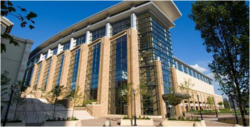
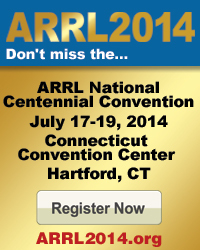
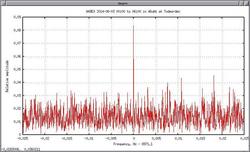
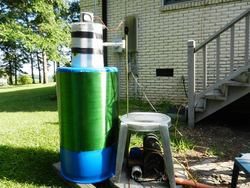
 Commenting on the 2006 proposal, the ARRL expressed concern about increasing noise levels in the band. "This 'kitchen sink' of allocations is acceptable from ARRL's perspective, provided that the noise floor is regulated, in terms of aggregate noise levels from unlicensed devices," the League said. "The high power levels permitted in this band in particular bear careful watching, lest the allocated radio services, including federal systems, suffer decreased utility of the band."
Commenting on the 2006 proposal, the ARRL expressed concern about increasing noise levels in the band. "This 'kitchen sink' of allocations is acceptable from ARRL's perspective, provided that the noise floor is regulated, in terms of aggregate noise levels from unlicensed devices," the League said. "The high power levels permitted in this band in particular bear careful watching, lest the allocated radio services, including federal systems, suffer decreased utility of the band."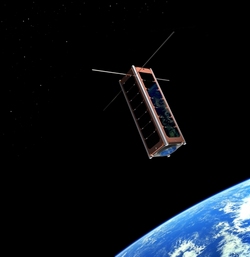
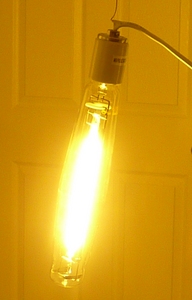
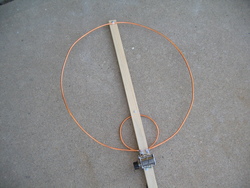
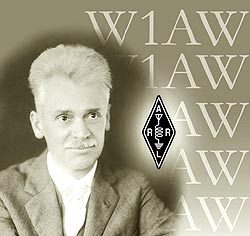 To celebrate the 100th anniversary of the ARRL, the
To celebrate the 100th anniversary of the ARRL, the 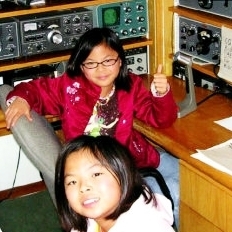 Open your doors, offer some hot dogs or pizza, and let the "little folks" take the Big Chair. Let them find stations they hear or work on a map, color in a map of states worked, or help them build something.
Open your doors, offer some hot dogs or pizza, and let the "little folks" take the Big Chair. Let them find stations they hear or work on a map, color in a map of states worked, or help them build something.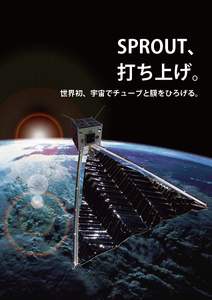
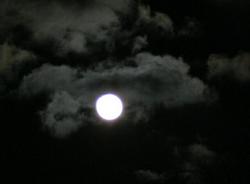 PY2BS said the main issues he had on his end
PY2BS said the main issues he had on his end 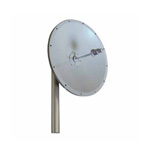 while and the digital contact signals were -14 dBm both ways. These records were subsequently extended to 90 km and 127 km later that same day.
while and the digital contact signals were -14 dBm both ways. These records were subsequently extended to 90 km and 127 km later that same day.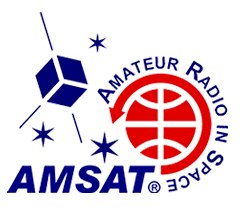 "Our team is focused to keep LO-78 operational for the benefit of Amateur Radio [for] as long as it is possible for a small CubeSat."
"Our team is focused to keep LO-78 operational for the benefit of Amateur Radio [for] as long as it is possible for a small CubeSat."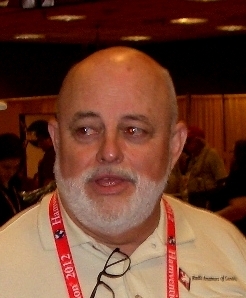
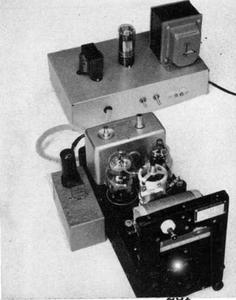
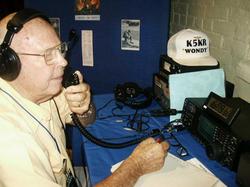
 Reminder: The ARRL June VHF Contest is June 14-16! The
Reminder: The ARRL June VHF Contest is June 14-16! The 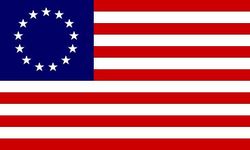 The 13 Colonies Special Event Set for July 1-6: The
The 13 Colonies Special Event Set for July 1-6: The .jpg) SP5FM Receives Michael Owen, VK3KI, Award: Wojciech Nietyksza, SP5FM, has been presented with the Michael Owen, VK3KI, Award for his decades of exceptional service to the International Amateur Radio Union (
SP5FM Receives Michael Owen, VK3KI, Award: Wojciech Nietyksza, SP5FM, has been presented with the Michael Owen, VK3KI, Award for his decades of exceptional service to the International Amateur Radio Union (.jpg) RAC Recognizes Volunteer Jacques Dube, VE2QK: The Radio Amateurs of Canada (
RAC Recognizes Volunteer Jacques Dube, VE2QK: The Radio Amateurs of Canada (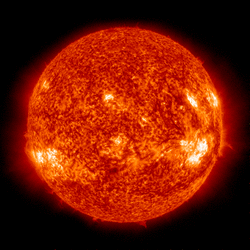 and 155 for June 12-15, 145 for June 16-18, 130 for June 19-20, then down to a low of 110 for June 24-25, then peaking at 165 on July 8. The outlook for
and 155 for June 12-15, 145 for June 16-18, 130 for June 19-20, then down to a low of 110 for June 24-25, then peaking at 165 on July 8. The outlook for 







